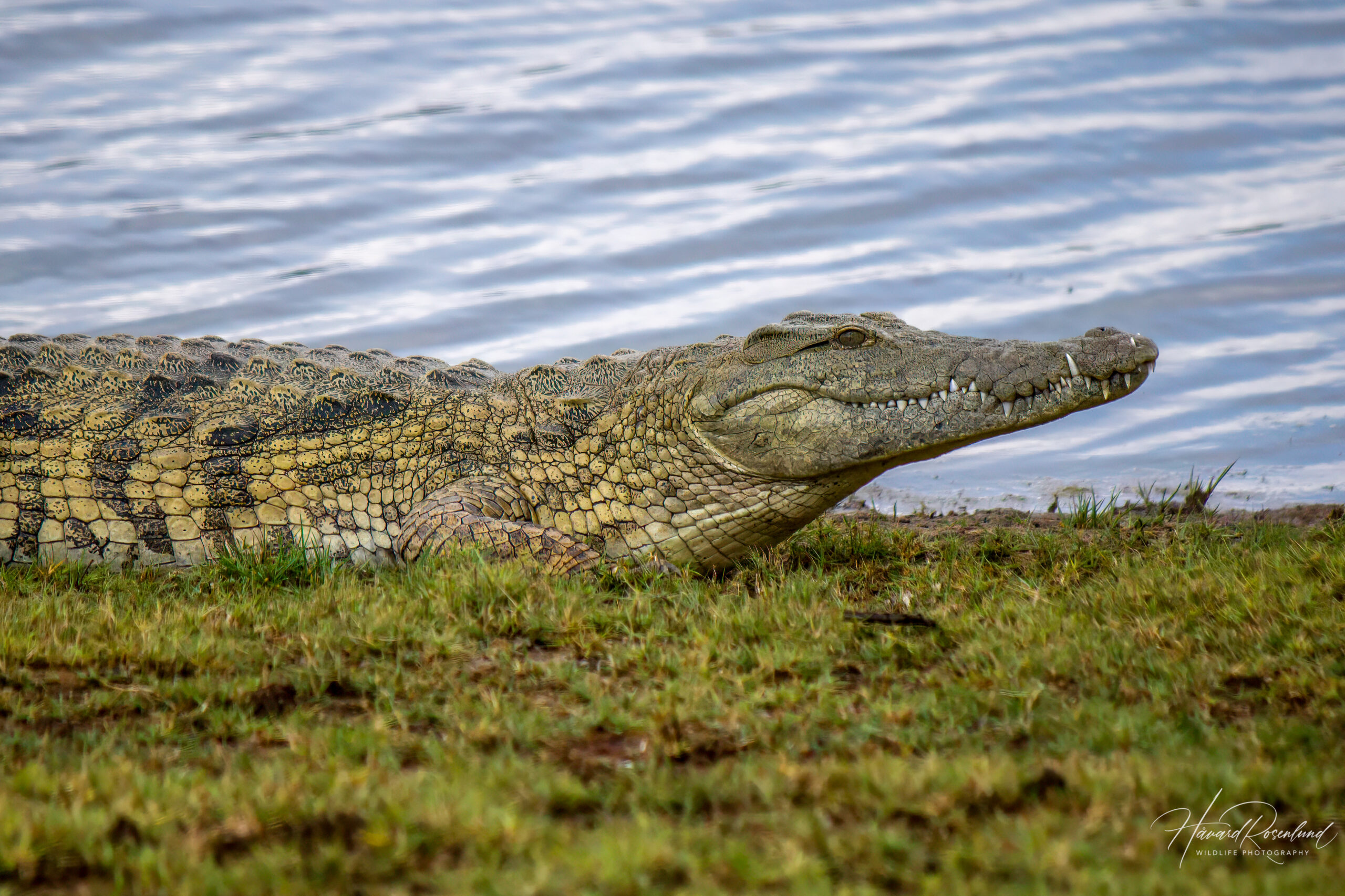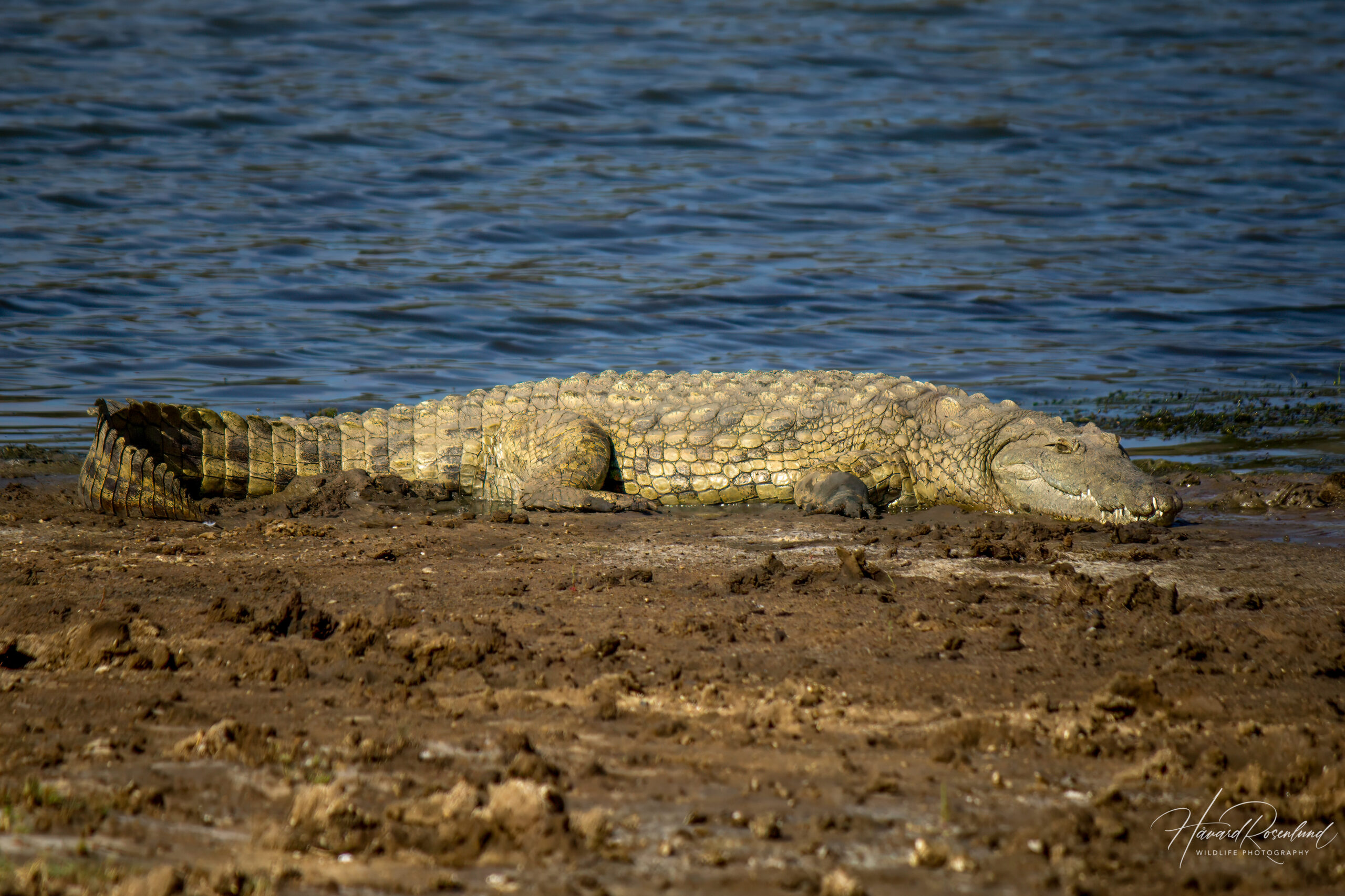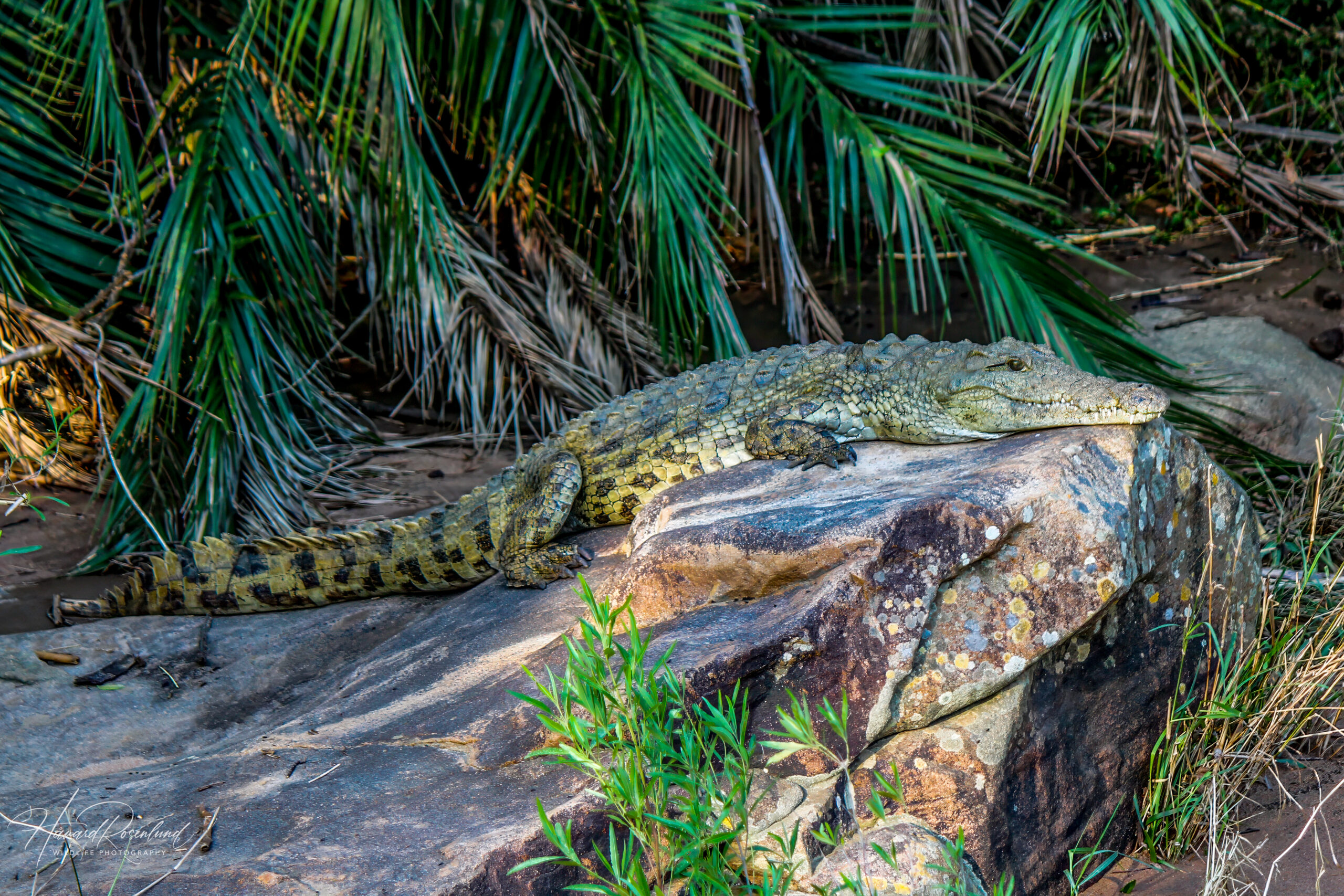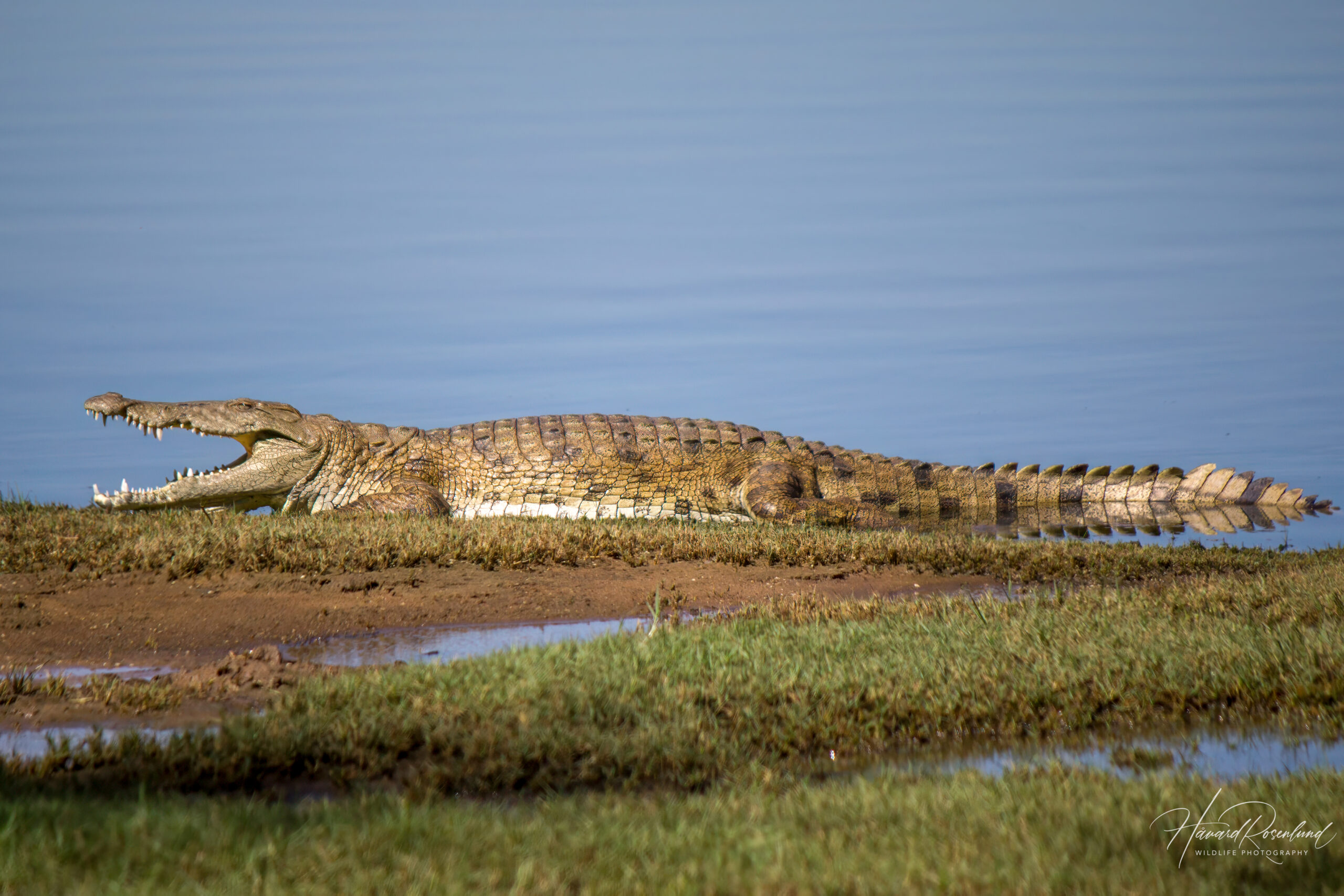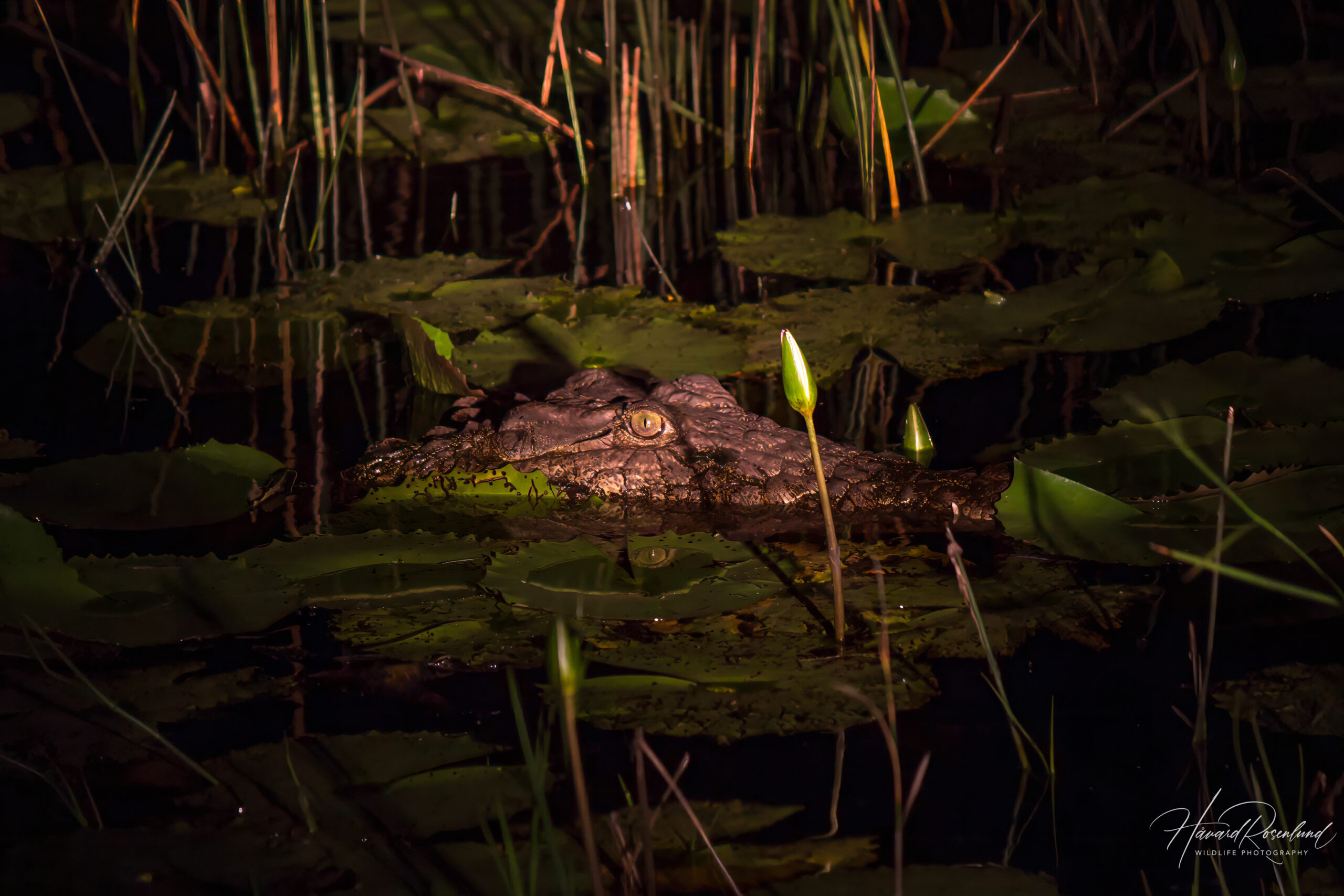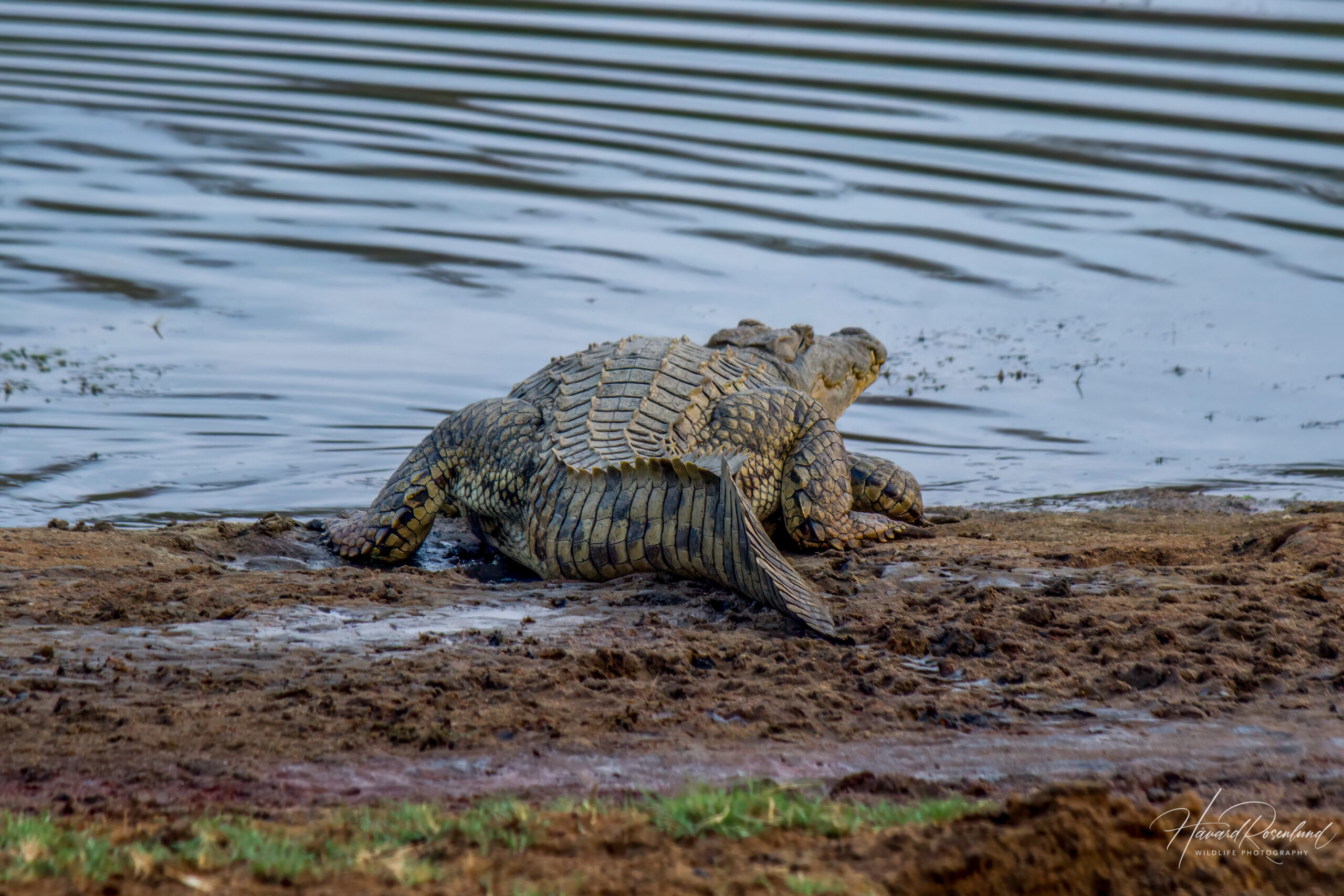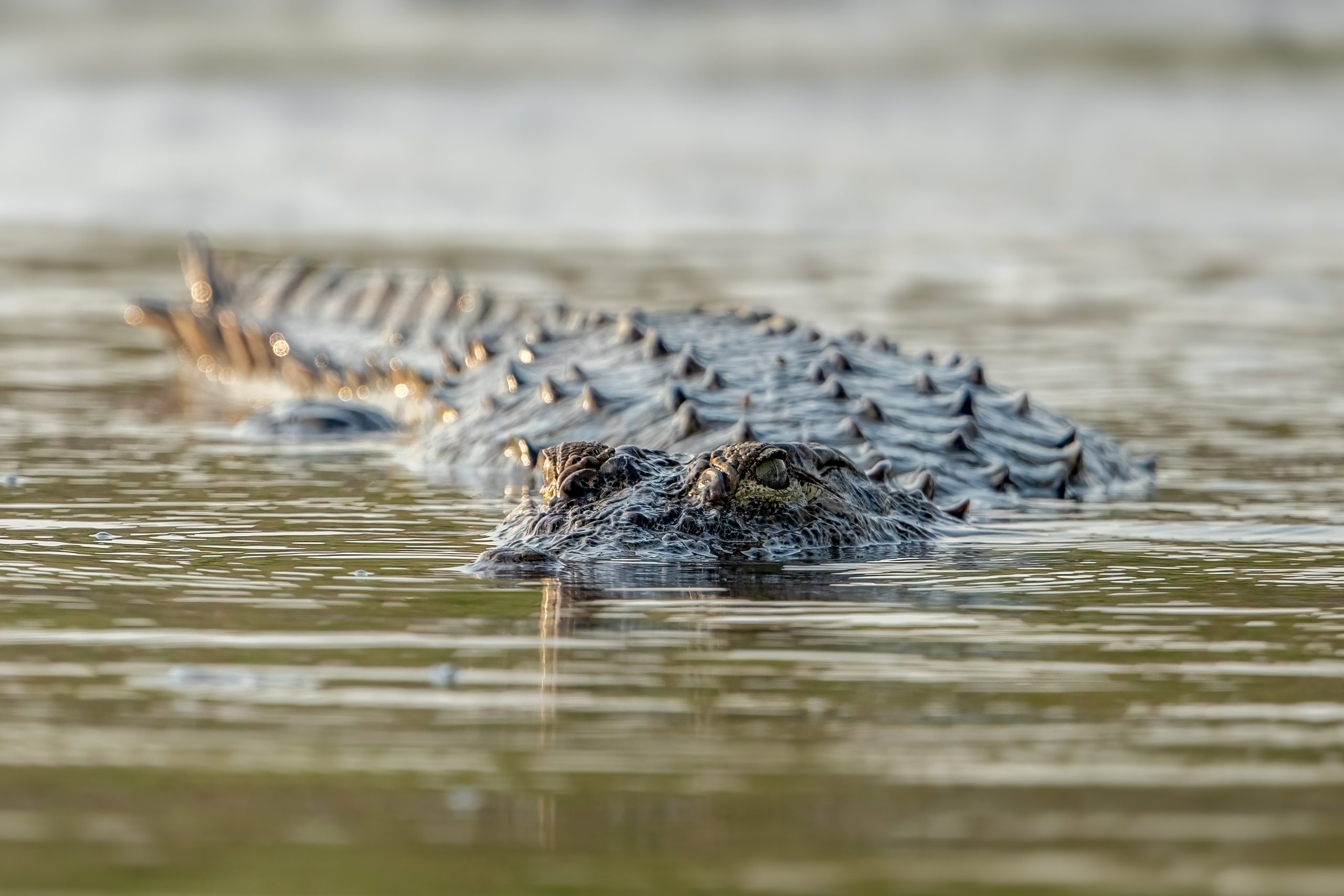Description
The Nile crocodile (Crocodylus niloticus) is the largest reptile in Africa, and the second largest reptile in the world after the saltwater crocodile (Crocodylus porosus). The average size of a Nile crocodile is lengths between 4.1-5 meters (13-15 ft) and a weight of 410 kg (900 lb). Larger individuals do occur, and some have been measured over 6 meters (20 ft) and with a weight up to 1,000 kg (2,200 lb). Animals of that size are not very common anymore, after a surge in hunting for crocodiles in the 1940’s and 50’s, and a decrease in large wetland habitats.
Diet & habitat
Nile crocodiles are found in almost any suitable water habitat, such as rivers, dams, marshes, and lakes. They are at the top of the food chain as apex predators wherever they are found, both in and outside of the water. They will hunt what they can catch, and what they eat depends on the size of the crocodile. Small and young Nile crocodiles tend to eat small fish, invertebrates, small reptiles, and amphibians, while subadults can go for birds, fish, larger reptiles, and small mammals up to the size of small antelopes. Adult crocodiles will try and catch almost any animal, and very large individuals have even been known to go for black rhinoceros, hippopotamus, and young elephants.
In East Africa antelopes and other herbivores take up the bulk of the prey base, while in other areas, like in Lake St Lucia in South Africa, fish take up the largest portions of caught prey. Crocodiles that eat fish tend not to become as large as those who eat larger mammals. Because of their metabolism, crocodiles can go for long periods between meals, but when they eat, they can ingest food up to half their body weight.
Here is a video of a Nile crocodile gliding through the water:
Hunting
The Nile crocodile is well-known for how it hunts, as it lays in the water waiting for prey with only the eyes and nostrils showing. Upon spotting a potential prey, they slowly glide towards it, dives under the surface, and then, when close enough, attacks its prey with immense force and speed. It grabs a hold on to its prey with powerful jaws and will try to drag its victim into the water where it will try to drown it or kill it by tearing it apart, often with other crocodiles. Fish eating crocodiles often use their tails to hurl fish onto the banks, or they will lay in wait downstream and catch any fish that comes by. Sometimes they cooperate by blocking schools of fish. The Nile crocodile also hunts on land, but its short legs make it hard to chase prey. Instead of chasing, it will stay in cover along trails that lead down to the water at night and ambush unsuspecting prey that walks past.
Throughout its range the Nile crocodile is targeted and killed as a man-eater. This is not always unfounded, as Nile crocodiles often live near human populations, and people are often caught and eaten by crocodiles. Many events go unreported, and it is thought that several hundred, or maybe even thousands, of people are killed by Nile crocodiles each year, which is more than any other crocodile species.
Reproduction
A female Nile crocodile will reach sexual maturity when reaching a length of 2-2.5 m (6 ft 7 in – 8 ft 2 in), and a male upon reaching a length of 3 m (9 ft 10 in). This will take approximately 10 years. During the mating season, males try to attract females by throwing their heads around, blowing water through their noses and creating various sounds and bellows. The largest males tend to be most successful. After two months, the female will lay 25-80 eggs in a nest she has dug out in the sand. After they are laid, she will bury them and guard them throughout an incubation period of three months. With the help of the father, she will try to fend off predators, but nests are often raided, as sometimes both parents have to leave the nest temporarily to cool down.
The hatchlings will give a high-pitched sound before hatching to alert the mother that it is time to open the nest. Parents may aid them in hatching by gently cracking the shells in their mouths. When hatched, young will be about 300 mm (12 in) long. The mother will lead her offspring to the water and will sometimes carry them in her mouth. What sex the offspring has depends on the temperature during the incubation period. Males are created at a temperature of 31.7°C (89.1°F) to 34.5°C (94.1°F) during the middle third of the incubation period. Females are created at temperatures both below and above this. The mother will care for her young for two years. After two years, the offspring will be 1.2 m (4 ft) long and ready for a life as independent crocodiles.
Status
In the period between the 1940’s and the 1960’s, the Nile crocodile was hunted for its leather and its meat, and the species was headed towards extinction. New laws and trade regulations came into play, and Nile crocodile populations gradually got back on their feet, and it is no longer a threatened species. It is thought to be between 50,000 and 70,000 mature individuals in the wild today and the population is stable. Nile crocodile is listed as least concern on the IUCN Red List.
Today, crocodile skins come from designated ranches and crocodile farms in Zimbabwe and South Africa. In West and Central Africa, the situation is worse, as they are losing habitat, are still affected by hunting in the 70’s, and face competition from slender-snouted crocodiles (Mecistops cataphractus) and dwarf crocodiles (Osteolaemus tetraspis).





